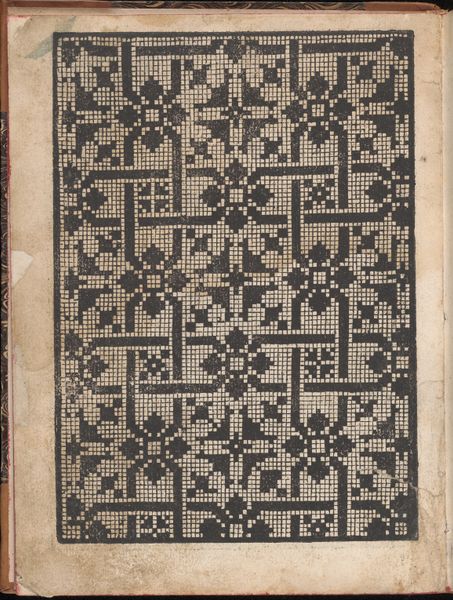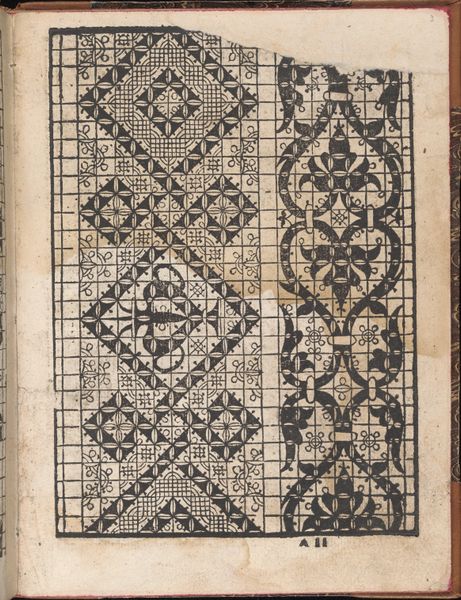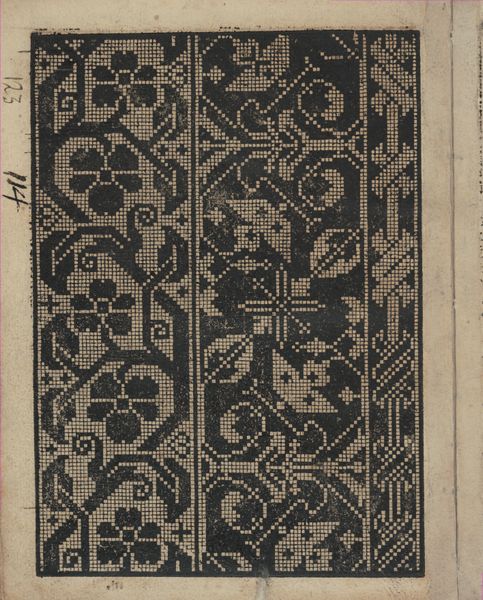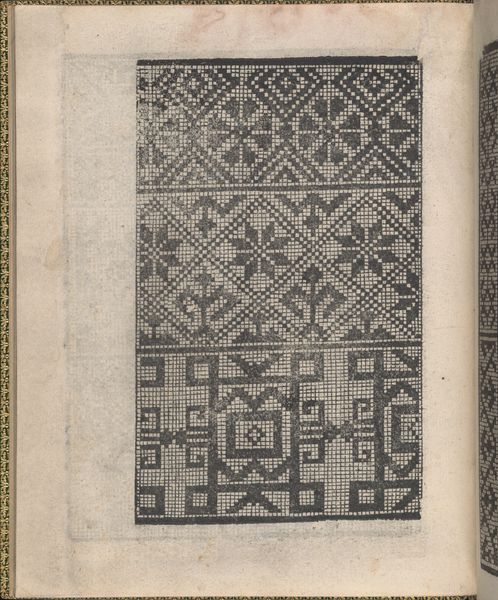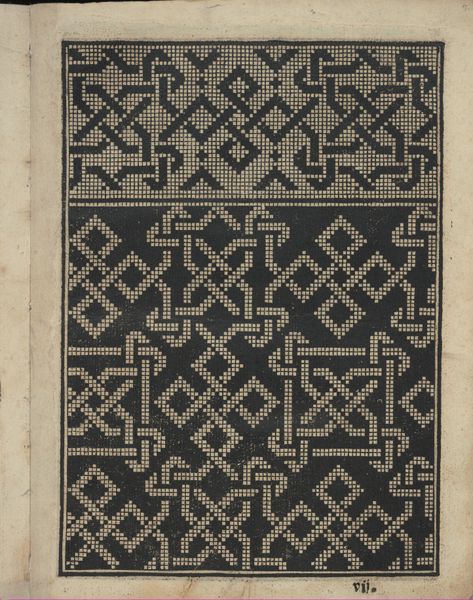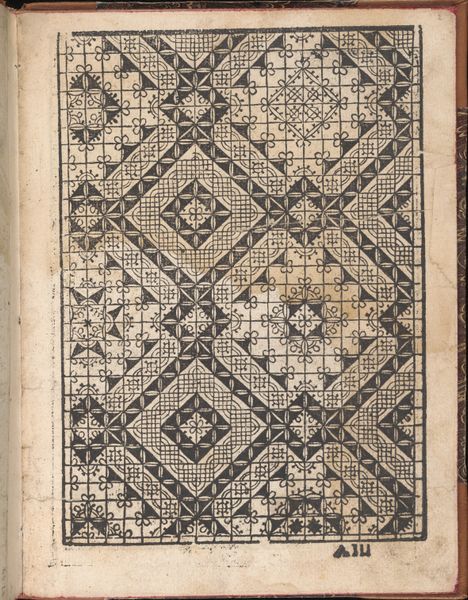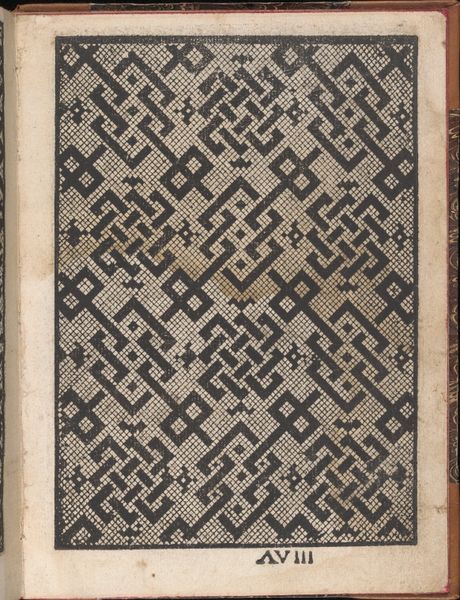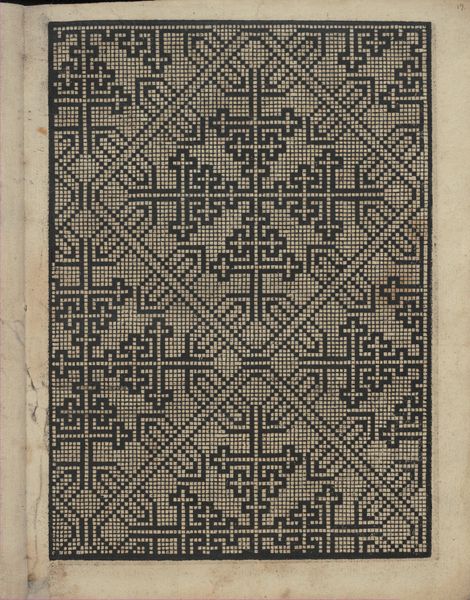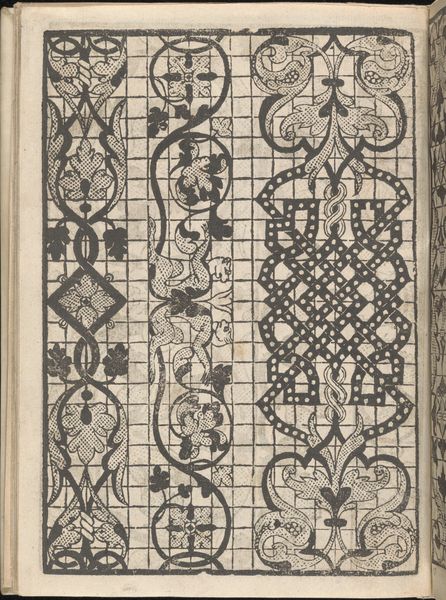
Spechio di pensieri delle belle et Virtudiose donne, page 11 (recto) 1546
0:00
0:00
drawing, print, paper
#
drawing
# print
#
book
#
paper
#
11_renaissance
#
geometric
#
italian-renaissance
Dimensions: Overall: 8 1/16 x 5 7/8 in. (20.5 x 15 cm)
Copyright: Public Domain
This page, made by Matteo Pagano in Venice during the 16th century, is a woodcut printed on paper, a relatively new technology at the time. Look closely at the design. The image is composed of black lines on a grid, creating an intricate pattern, which has a direct relationship to the process by which it was made. Woodcut is a relief printing process. The artist carves away at a block of wood, leaving only the lines to be printed. The block is then inked, and paper is pressed against it to transfer the image. This labor-intensive process demanded skill and precision. This particular design served as a template for lacemakers and embroiderers. The grid-like structure reflects the counting of threads that was essential to these crafts. This book provides a fascinating glimpse into the world of female labor and creativity in the Renaissance. It reminds us that so-called 'minor arts' like lace making were important economic activities, and that the design and production of these goods involved sophisticated skills and knowledge. Appreciating this history helps us move beyond traditional categories of art, and to recognize the value and ingenuity of craft practices.
Comments
No comments
Be the first to comment and join the conversation on the ultimate creative platform.
